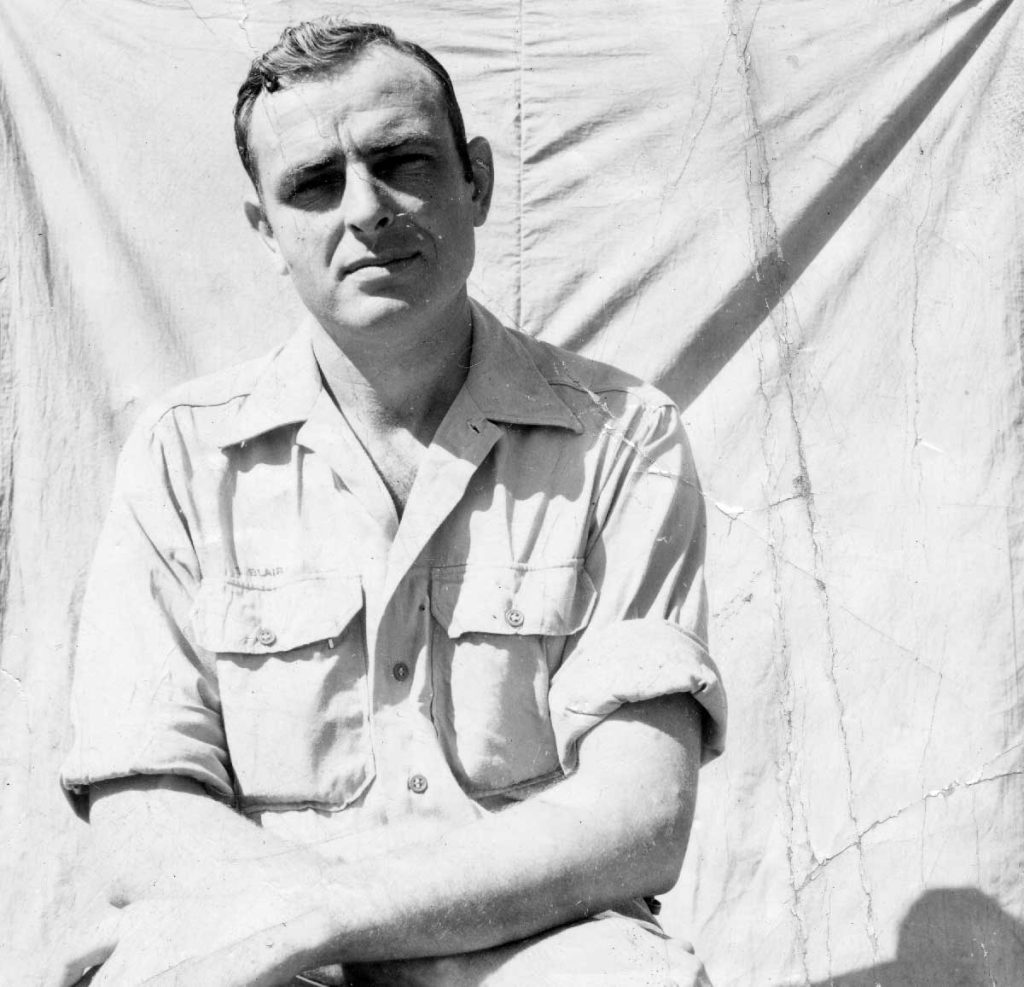Especially prior to the outbreak of World War II, fascists and Nazi sympathizers were an unfortunately prominent component of the American political landscape. Tens of thousands joined the German-American Bund, a pro-Nazi organization that organized summer camps for American youths and held an enormous rally at Madison Square Garden just before the beginning of the war.[i] The group established one of their training camps in northern Utah, where Utahan children may have worn the uniforms of the Hitler Youth.[ii]
Meanwhile, the Silver Legion (often called the Silver Shirts), a political and paramilitary organization, attempted to bring together an American fascist movement modeled on the one that had come to power in Germany.[iii] Utah was not free of these ideologies. An eccentric spiritualist with ties to the Silver Legion named Marie Ogden briefly led “a colony” of supporters in southern Utah before being arrested. And the first documented case of political violence carried out by the Legion took place in Salt Lake City, where Several Silver Shirts “kidnapped and beat a suspected Communist in the presence of witnesses and police.” The perpetrators were never charged with a crime despite the police’s presence, suggesting that there was sympathy for their cause among Salt Lake’s law enforcement officers.[iv]
Although there may have been Nazi sympathizers elsewhere in Utah, there seems to have been little sign of them in Park City in the years leading up to World War II. Then-editor of the Park Record, Samuel Raddon, and his staff appear to have developed an early antipathy to the Nazis, and they often transmitted their beliefs to their fellow Parkites. The Record’s hostility to the Nazis predates the latter’s seizure of power, and writers often ridiculed Hitler and the Nazis in this period. While it cautioned readers about “the Brown Terror” Nazis were unleashing on Germany, threatening the integrity of German democracy, it also laughed off Hitler’s attempt to win the German presidency in 1932.[v]
One columnist, Frank Parker Stockbridge, declared that “any such program as Hitler’s seems incomprehensible to us,” arguing that American Jews were too well-integrated and respected for anti-Semitic fascism to take root in the United States. The popularity of organizations like the German-American Bund, however, proved Stockbridge to be too naive.[vi]
Though the Record enthusiastically supported the Allies once war broke out in Europe, Raddon fell short of advocating intervention against Nazi Germany, writing in his personal column that “the American people frankly do not see in the immediate or distant future an issue worth fighting for.”[vii]

Credit: Park City Historical Society & Museum, Himes-Bick Digital Collection
Oral histories suggest, though, that Parkites were energetic supporters of the war against fascism after the attack on Pearl Harbor. Marie Horan recalled that “patriotism was just at the top…. Win the War—everybody worked toward that.” She also speculated that Park City’s status as a cultural melting pot contributed to this enthusiasm: “It was home to a lot of immigrant families who maybe they had [sic] been born somewhere else, or their parents, but they had come here…. And they knew what we had [in freedom].”[viii]
Fellow Parkite Gloria Daley McCandles echoed this, and remembered that “…[she had] never seen such a loyal bunch of people so everything was for freedom and United States.”[ix] Some in Park City volunteered for or were drafted into the United States military and fought overseas. Carl Workman, a draftee who fought against the Japanese in the Pacific Theater, later expressed pride in what his country had done in defeating Japan and its German ally: “we saved our country and got freedom to everybody that wants to do what they want do in this life.”[x]
The Park City Museum is hosting a lecture titled “Not Who He Seems?,” about Nazi sympathizer Count Felix von Schaffgotschgiven and his connection to Park City, given by David Nicholas and Stuart Stanek on Wednesday, October 16 from 5-6 p.m. at the Museum’s Education and Collections Center located at 2079 Sidewinder Drive.
[i] Alan Taylor, “American Nazis in the 1930s—The German American Bund,” The Atlantic, June 5, 2017, https://www.theatlantic.com/photo/2017/06/american-nazis-in-the-1930sthe-german-american-bund/529185/.
[ii] “Americans and the Holocaust,” The US and the Nazi Threat: 1933–1937, United States Holocaust Memorial Museum, accessed October 1, 2024, https://exhibitions.ushmm.org/americans-and-the-holocaust/main/nazis-in-america.
[iii] Jason Daley, “The Screenwriting Mystic Who Wanted to Be the American Führer,” Smithsonian Magazine, October 3, 2018, https://www.smithsonianmag.com/history/meet-screenwriting-mystic-who-wanted-be-american-fuhrer-180970449/.
[iv] Frank B. Wanat, “The Silver Shirts: A Venture in Frustrated Fascism” (MA thesis, Youngstown State University, 1974), 42.
[v] Francis Harrington, “Democracy at the Crossroads,” Park Record, September 25, 1931, 7, https://newspapers.lib.utah.edu/ark:/87278/s6v70mzp/8000940; “Editorial Brevities,” Park Record, March 4, 1932, 4, https://newspapers.lib.utah.edu/ark:/87278/s6xp879r/8006325; “Editorial Brevities,” Park Record, March 18, 1932, 6, https://newspapers.lib.utah.edu/ark:/87278/s690366m/8006813.
[vi] Frank Parker Stockbridge, “Today and Tomorrow,” Park Record, April 8, 1932, 6, https://newspapers.lib.utah.edu/ark:/87278/s6gt6qnm/8002876.
[vii] “Stroller Notices,” Park Record, September 14, 1939, 5, https://newspapers.lib.utah.edu/ark:/87278/s6tf10tk/8028434; “Dad’s Column,” October 5, 1939, 1, https://newspapers.lib.utah.edu/ark:/87278/s6f48rj7/8028667.
[viii] Marie Horan, interview by Anji Buckner, Living Park City: An Oral History Program, December 2, 1999, transcript.
[ix] Gloria Davey McCandles, interview by Larry Warren, Park City Museum, December 7, 2010, transcript,
[x] Carl Workman, interview by Larry Warren, Park City Museum, December 7, 2010, transcript.